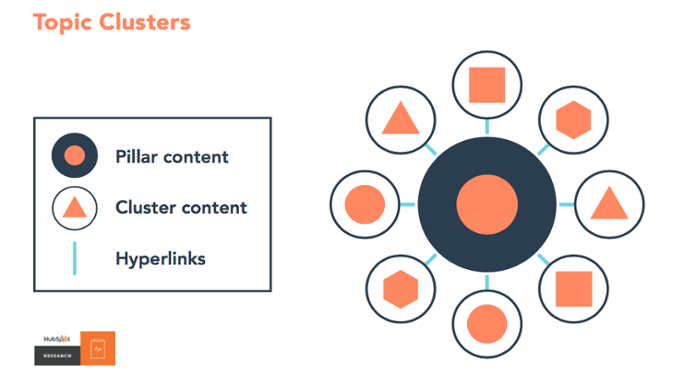Last updated on October 26th, 2022
Change is the only constant in this world and even the virtual world couldn’t have eluded its effects. One thing that actually remains unchanged is the competition that every website has to face and the owners are willing to go any length to outdo their competitors in the race to the top of the search engines.
So, what is the deal about search engine rankings?
There is immense competition to get noticed in the search engine results and subsequently ranked there. This has forced websites to perpetually reconfigure their strategies for web pages and this is where the idea of
SEO strategy comes into the picture here.
Consider this, you have a question plaguing your mind concerning the product you are looking to purchase or a service that you want to avail.
Your first instinct is to ask the search engine, and voila, you get several result pages of which you choose to visit any one that seems most relevant to your query.
This piece of content answers your query, but while you sit reading the article, it brings some more questions to your mind.
What do you do next?
Go back to the search engine and input another query? Absolutely not!
Instead, wouldn’t it be wonderful if the original article you stumbled upon provided you with a route to find answers to the new questions that you have without having to find your way back to Google?
This is precisely what a Cluster SEO strategy can do for you.
Hey, if you are an experienced marketer already familiar with how topic clusters benefit your SEO, move to the part of the blog where I have mentioned a step-by-step method you can follow to create topic clusters on your website.
What is the Cluster SEO Strategy?
We know that search engines are intelligent. With their algorithms evolving constantly, your queries are handled with even more precision today than earlier.
How often do you find yourself looking for something as specific as the “best Chinese restaurant on XYZ road of ABC city” or “where can I buy a smartphone near my home”?, and you get precise results with names of service providers, their physical addresses, and contact information in seconds!
Amazing, eh?
With changing user behaviour, search trends have changed and queries have become more specific than before. Further, people turn to search engines every time they have a query, be it about a company, product or service. They need precise answers to specific questions and they need them fast.
Also, with the option of voice search available to them, specific questions with long tail keywords are pretty common today. Smartphones and tablets have made voice search more popular with users who are constantly on the move. They find it time-saving and much more convenient to “Search by Voice”, (like Google calls it), than typing the query into the ‘Search’ field.
SEO has also evolved over the years and the focus has slowly shifted to the topic cluster model where the “pillar page” is the primary hub of content and multiple content pages related to this topic link back to the pillar page and also to each other.
In short, they form a content cluster or a topic cluster.
Image Source:hubspot.com
Such linking hints to the search engines about the authority of the pillar content on the topic which in turn helps it gain popularity and climb higher on the Search Engine Results Pages (SERPs) with time.
The topic cluster approach to SEO is quite a drastic shift from the keyword based model you are acquainted with. It involves rearranging the architecture of your website by linking content clusters with the central topic page.
Cluster SEO Strategy Illustrated
Let’s take a look at an example to understand topic clusters and pillar pages better.
Fitness and health are a rage today and yoga has been drawing attention not just from people in India but from around the world. People often search for specifics related to this topic such as below:
- Yoga postures.
- Yoga for fitness.
- Yoga poses for kids.
- Yoga poses for a flat stomach.
- Yoga for beginners.
- Yoga for senior citizens.
- Yoga for knee pain.
- Yoga apps for learning.
The focus is on the core topic ‘Yoga’ which evidently becomes the pillar page. The specifics that people search for become the cluster content, each of which is linked to the pillar page and rely on it for showing up in the SERPs every time a user inputs a query relevant to them.
How Have Search Engines Compelled Marketers to Rethink About the Content Marketing SEO Strategy?
The emergence of cluster SEO strategy can be attributed to changing user behaviour on search engines which has forced SEO specialists and marketers to completely revamp their site structure.
Gone are the days when users posted fragmented keyword queries on search engines. The trend has now changed to more complex and specific queries with focus on precise long tail keywords.
Users are more tech-savvy today and know how to use technology to their advantage. There is an increasing tendency among them to run specific, need-based searches. The conversion rate of such queries are usually higher. If you want your website to rank higher on these searches, you must use long tail keywords in your cluster SEO strategy.
Google’s search algorithm is smart enough to decipher the topical context and intent behind searches. It knows how to relate them to similar query searches by the same user in the past and suggest web pages that befittingly answer the query.
Google’s Hummingbird update in 2013 spearheaded this shift in focus as the search algorithm began parsing out phrases instead of focusing on keywords only. Google’s Rankbrain update in 2015 strengthened the reliance on topics and further helped the search engine understand the context behind searches.
Updates on the search algorithm of Google have been happening even as you read this. It looks like pillar content marketing is here to stay for a long time and your SEO efforts would revolve around it.
Quick Step-by-Step Guide to Creating Topic Clusters
Here’s a look at how you can model your Cluster SEO strategy.
1. Identify the Gaps in Your Content
Figure out the keywords/topics your competitors rank for but you don’t. These are the problem areas you need to address if you want to gain authority on a topic.
There are tools online you can effortlessly use to identify the content gaps among which SEMrush is a trusted one. Use it to get a clear, in-depth analysis of your website. Incorporating the results in your online content marketing seo strategy have been known to show significant results on your website’s performance. Get started by providing your domain URL in the search box and selecting your country.
Image Source:semrush.com
2. Figure Out the Most Common Questions Thrown by Your Target Audience
Spend some time researching on the kind of queries your target audience are most likely to ask on the search engines and formulate your content strategy around it.
For example, if you are an electrical repair company in the Kandivali region of Mumbai and cater to demands in and around this suburb, it is logical for your website to show up in the SERPs every time anyone queries “electrical repair company in Kandivali”. Likewise, you need to optimise your page for specific queries such as “fan repair Malad west” or “refrigerator repair Goregaon” (provided you offer your services in these areas).
Use the Google Adwords Keyword Planner Tool and input broad keywords to check what kind of queries the search engine has been receiving for those terms. Identify the search volume to know the keyword variations that make sense to your business. Import few relevant ones to an Excel sheet and these will form the focus for your cluster SEO strategy.
3. Review Target Keywords to Arrive at Your Pillar Content
Give some thought to the keywords to arrive at the pillar content you want to add to your website and create pages for each. These become your pillar pages and are those to which you intend to drive targeted traffic and convert users.
Pillar pages should have substantial content and they should be able to resolve visitor queries. Every keyword you identified in the previous step becomes a pillar and provides primary support to a large cluster of long tail keywords which will form the cluster content mentioned in next point.
4. Create and Group Cluster Content Around Pillar Pages
Create and group the sub-topics according to the pillar content and you will have multiple sets of topic clusters and pillar pages ready. Each cluster comprises a pillar page and a set of content pages linking to the pillar page.
Use sub-topics to arrive at blog posts or web page ideas that throw light on a specific concept within the scope of the pillar content. Together, all the sub-topics form a cluster. Ideally, you may have five to 10 sub-topics in a cluster to create a topic cluster. How you can arrive at keywords for your cluster content is elucidated in the following step.
5.Conduct Keyword Research to Identify Long Tail Keywords for Every Sub-Topic
Long tail keywords often end up being specific and indicate that users turn to search engines for precise information on a subject. This is where you will be optimising your pages for specific keywords. Use the keyword tool again to figure specific keywords for each pillar. These keywords delve deeper into the main keyword, which is also the idea behind cluster pages. Make sure that the content is relevant to the keywords so that your visitors get what they are looking for and should not bounce back immediately.
6. Hyperlink All Content in Every Set to Build a Topic Cluster
Hyperlinking is the key when you want to keep your audience engaged on your website for a longer duration. Use the right anchor text and ensure that the pillar page your content links to has substantial information to make your visitors happy.
What happens when you already have a set of informative articles/blogs up on your website or ready on your dashboard? You cannot afford to let the valuable content go waste. Follow the reverse approach in such a scenario.
Review the live or ready ones and arrive at the main topic each of them focuses on. These topics become the foundation for your pillar content and they must capture relevant long tail keywords to gain leverage on search engines.
Going forward, the ideal approach would be to conceptualise the pillar content and tailor your cluster content around it.
How to Establish Your Authority Using The Topic Cluster SEO Strategy?
Today, the question that plagues the minds of marketers is “how to improve a website’s SEO ranking on Google”? Creating topic based content is the answer.
Merely creating content does not work without the backing of a strong SEO strategy.
If you are posting informative content on your website, it has to be found in the SERPs by your target audience. Only then will it meet the goals of your business.
Here are a few things to note:
- Linking content together on your website indicates your authority on a topic to the search engine. If users stay on your page for some time and move across the content pages, it can help boost your ranking on Google.
- To bolster your cluster SEO strategy, you need to rank for an entire topic and just targeting a few keywords will not help. Your pillar pages and the content clusters around each of them will form the topics you want to derive SEO leverage from.
- When the cluster content and pillar pages are relevantly linked, you convey the message to Google that you have a strong command over everything related to the topic. You will gain authority on the content over time with Google giving your pillar content and its sub-topics a good leverage in the SERPs. This boost in search engine rankings is the reward you get for your site restructuring and making your web pages logically linked and easy to crawl.
- Remember that there’s a caveat here. Your pillar pages must have substantial content because your sub-topic pages will be linking to it. So, if a site visitor decides to click the pillar page link, you should derive something concrete out of it or it should answer his query. Only then will the visitor be prompted to convert to a lead.
- You aren’t writing content for search engines . Instead, you must produce informative content that will be a value-addition for your audience and help customers find you.
Chisel your Cluster SEO Strategy Today and Boost Your SEO Rankings.
Yes, the verdict is out.
Search engines like Google favour topic clusters and this strategy is mainstream already.
By giving you greater search visibility for a topic, interlinking cluster and pillar content, and funnelling your site visitors from cluster content to pillar pages you can get visitors hooked to your site and push your ranking up by a few notches on the search engines.











